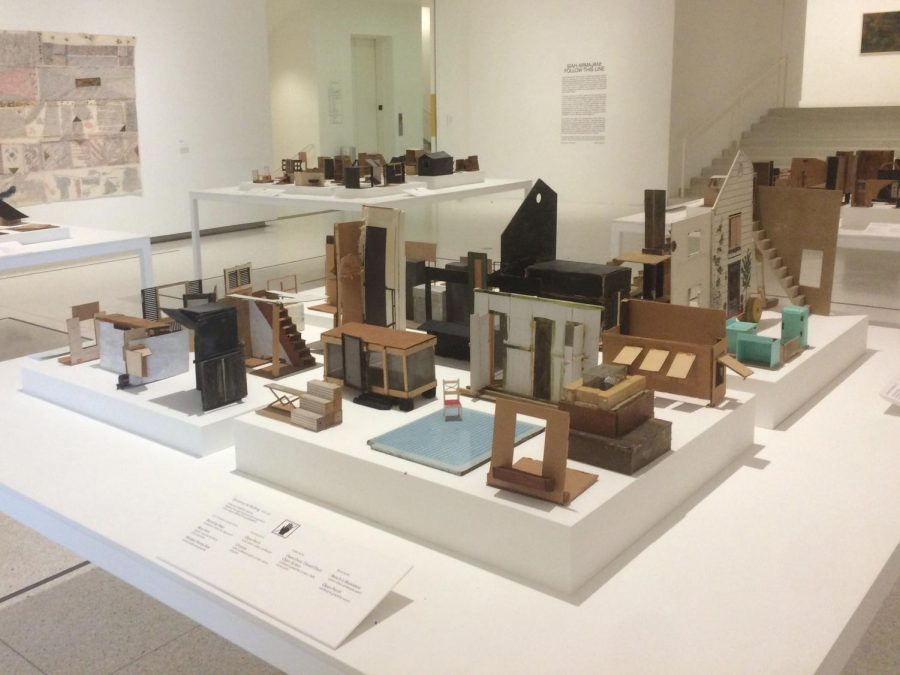‘Follow This Line’ leads visitors into architectural art
Walker Art Center broadcasts Minnesotan architect
Siah Armajani: Follow The Line is at the Walker Art Center Sep. 9 through Dec. 30.
November 4, 2018
The Walker Art Center’s newest exhibit, “Follow This Line” by Siah Armajani, incorporates his work as an architect into the field of exhibition artwork. The pieces grow in size and detail as you go up each level of the building, and the ideas deepen along with them. Armajani is known best for his bridges, gazebos, gardens and reading rooms across the United States and Europe. “Follow This Line” is at first glance hard to comprehend, but when reading into Armajani’s descriptions of the concepts, pieces begin to make sense in an unexpected gallery walk-through.
The exhibit begins in 1950s Iran and ends in modern-day United States. Without reading the exhibit’s descriptions on the wall, this may not be clear right away. The art varies from paintings to films and touches on subjects of history, philosophy and everything in between. Exploring the physical world and realm of ideas is the main goal of Armajani’s art.
Walking from the first to the second floor shows the evolution of simple ideas into intricate plans and reality. The first floor uses small pieces of cardboard and knick-knacks to plan outbuildings, rooms, or outdoor developments. The second floor continues to develop these ideas as color and detail come into play. Some of the models are brought to larger scale and are available to look at with more detail and understanding. Many of the larger structures resemble rooms that could be entered but are restricted and blocked out. The pieces in this particular area are the most fun to look at and attempt to interact with. Seeing the progression of the projects is incredibly interesting and matching them to the smaller models brings the two concepts of the physical world and realm of ideas together beautifully.
On the third floor of the exhibition, there are six seating areas with books and pencils provided. These are smaller scale examples of the reading rooms Armajani has built. This may be the most confusing piece, yet it holds the most meaning. The books in the reading rooms all center around Russian perspective of race and identity. There are also publications of an article titled “Red-Black Thread” which delves into the construction of race and black identity from the Soviet and Russian point of view. Armajani created the reading rooms to foster debate and healthy discussion on such deep topics. Compared to the second floor, where the art is off limits and leaves the viewers on the outside looking in, the open atmosphere of the reading rooms offers a great interaction to sit, read and discuss.
“Follow This Line” is an exhibit that opens up discussion and welcomes ideas. The art can be confusing and challenging at times, but can also be thought-provoking. Art is different for everyone, people who like brightly colored interactive pieces with moving parts would not enjoy this as much as someone who likes to think about exhibits even after they have left the museum. “Follow This Line” is on show at The Walker Art Center until Dec. 30, 2018.




